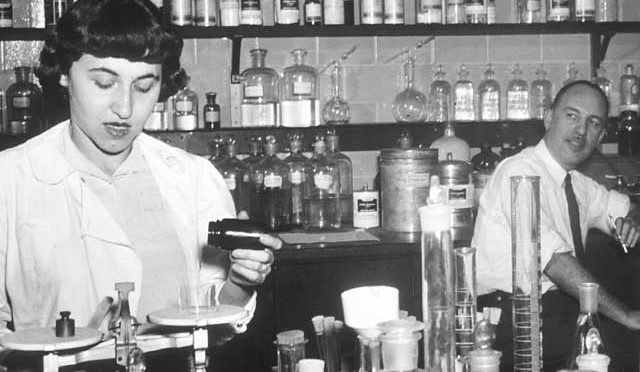Category: Plants & Medicine
-
How Peat Moss Saved Lives During World War 1
In ancient times, Gaelic-Irish sources wrote that warriors in the battle of Clontarf used moss to pack their wounds. Moss was also used by Native Americans, who lined their children’s cradles and carriers with it as a type of natural diaper. It continued to be used sporadically when battles erupted, including during the Napoleonic and…
-
Study Shows That Rosemary Is Indeed For Remembrance.
A study found that pupils working in a room with the aroma of rosemary, in the form of an essential oil, achieved 5% to 7% better results in memory tests. (Click on title for full story.)
-
Curing Drug-Resistant Malaria With Plants
When the standard malaria medications failed to help 18 critically ill patients, the attending physician in a Congo clinic acted under the “compassionate use” doctrine and prescribed a not-yet-approved malaria therapy made only from the dried leaves of the Artemisia annua plant. In just five days, all 18 people fully recovered. This small but stunningly…
-

When Scientists Began Systematic Screening Of Plants To Fight Cancer
“If you look at the source of drugs used in cancer,” Newman says, “60-plus percent of them are either a natural product, a modified natural product, or depend upon what is known as a natural product pharmacophore”—in other words, a synthetic version of a natural molecule. Hartwell was “the leader” in organizing the discovery of…
-
New Sleep Aid Isolated From Ancient Herbal Remedy
Can’t sleep? Your sleep problems may be improved if you try an Indian herb, Ashwagandha. Researchers in the sleep institute in Japan found that an active component of Ashwagandha leaves significantly induces sleep. (Click on title for full story.)
-
Spinach Leaves Used To Mend Damaged Human Hearts?
In a series of experiments, the team cultured beating human heart cells on spinach leaves that were stripped of plant cells. They flowed fluids and microbeads similar in size to human blood cells through the spinach vasculature, and they seeded the spinach veins with human cells that line blood vessels. These proof-of-concept studies open the…
-
Can This Invasive Tree Be Used To Fight MRSA Infections?
“This kind of study shows that when you take a logical approach focusing on those species that have been used in traditional medicines for centuries, that still is a valid area to explore and I think we can make a lot of progress in developing drugs that can help a larger population if we continue…
-
The Medical Hype About Turmeric And Curcumin May Be A Trick
Inside the golden-yellow spice turmeric lurks a chemical deceiver: curcumin, a molecule that is widely touted as having medicinal activity, but which also gives false signals in drug screening tests. For years, chemists have urged caution about curcumin and other compounds that can mislead naive drug hunters. (Click on title for full story.)
-
Cancer Patients Best Friend May Be Psychedelic Mushroom
A pair of randomized, blinded studies published Thursday in The Journal of Psychopharmacology provide the most robust evidence to date that a single dose of psilocybin can provide relief from the anxiety and gloom associated with cancer for at least six months. (Click on title for full story.)
-
How Fresher Supermarket Bananas Led To A Treatment For Doomed Bats
I was standing there looking at a bucket of moldy bananas next to a bucket of bananas with no mold, If the bacterium could be so effective on fungi on bananas, could it have similar effects on fungus on bats? It was one of those leaps of thought in science that maybe only a grad…
